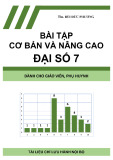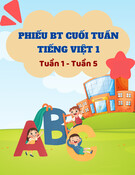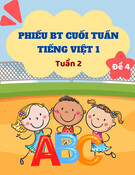
BÀI TẬP THỰC HÀNH ĐIỀN TỪ (1)
Exercise 1.
One thing about London which every visitor from abroad admires is the large (1) ______ of parks. They
are lungs of London which are like green islands of peace and quiet in the middle of a noisy sea. They play
an important part in helping to (2) ________ the city’s character.
The best known parks are, of course, the central ones : St James’s Park, Hyde Park, Regent’s Park, and
Kensington Gardens which have many (3) _______. Hyde Park has the Serpentine, a little lake, whick is a
good place (4) ______ swimming or rowing, and Speaker’s Conner (5) _____ one may get up ans say
anything one pleases. In Regent’s Park there are the zoo and the Open – Air Theatre.
Kensington Gardens has the Round Pond which is used by “ dry land sailors” of all ages to (6) ________
every kind of modern yacht. St James’s Park boasts a truly elegant lake (7) ______ which live a great
variety of wild ducks and, apart from these individual attractions, (8) _____ park has a greater or lesser
expanse of well – kept grass. Here, in fine weather, can be seen hundreds of lucky people who have
escaped for a while (9) _______ the noise and bustle of the town, some sitting on chairs, some lying full
length (10) ______ the ground, some strolling aimlessly around.
Exercise 2.
English is much different from the language which (1) ______ once brought across the North Sea by the
Anglo – Saxons.
Although the Anglo –Saxons would be able to recognize many individual words, it’s the way (2) ______
which those words are put together to (3) __________ sentences that would be hardly recognizable (4)
_______ them.
Many people say it’s the flexibility of function of individual words, the assimilation of borrowings (5)
_______ the spontaneous creation of new words (6) ______ have made English an effective medium of
international communication.
Exercise 3.
In the world today, there are 5000 to 6000 living languages, of which English is (1) ____ far the most
widely used. As a mother tongue, it ranks second only to Chinese, which is little used (2) _______ China.
Approximately 350 million people speak English as their first language. It is the English language (3)
_____ is used as the language of aviation, international sport and pop music. 75% of the world’s mail is in
English, 60% of the world radio (4) ______ broadcasr in English and more than half of the world’s
periodicals are printed in English.
It is the English language that is used as an (5) ______ language in 44 countries, ans as the language of
business, commerce and technology (6) ________ many others. English is now an effective medium of
international communication. However, it is (7) ______ written English, which is not systematically
phonetic, that causes difficulties (8) ________ foreigners.
A number of world varieties of English exist : British, American, Caribbean, West African, East African,
Indian, South – East Asian, Australian (9) ______ others, having distinctive aspects of pronunciation and
useage, (10) ______ which they are recognized.
Exercise 4.
It has been said that the British and Americans are “ two people seperated (1) _____ a common
language”. However, the (2) _______ between British and American English are comparatively small.
Although some British irate people occasionally complain (3)______ the latest American TV series (4)
______ which they are unable to understand a word, it is clear that few people have serious problems. In
fact, it is television, films, and pop music (5) ______ have helped to bring them closer (6) _______ , and
those minor difficulties which might occur (7)_____ comprehension are probably much fewer than 40 or 50
years ago. Normally four or five American programmes are found in an evening on British television, and 6
or 7 of the American 20 best records are (8) ____ British artists.
Exercise 5.
What will man (1) _____ like in the future – in 5000 or even 50,000 years from now ? We can only (2)
_____ a guess , of course, but we can be sure that he will be different from (3) ______ he is today. For man
is slowly changing all the time.






![Bài tập so sánh hơn và so sánh nhất của tính từ [kèm đáp án/mới nhất]](https://cdn.tailieu.vn/images/document/thumbnail/2025/20250808/nhatlinhluong27@gmail.com/135x160/77671754900604.jpg)
![Tài liệu tham khảo Tiếng Anh lớp 8 [mới nhất/hay nhất/chuẩn nhất]](https://cdn.tailieu.vn/images/document/thumbnail/2025/20250806/anhvan.knndl.htc@gmail.com/135x160/54311754535084.jpg)
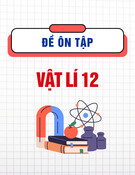
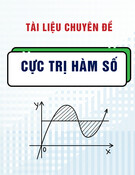
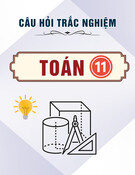

![Tài liệu Lý thuyết và Bài tập Tiếng Anh lớp 6 [Mới nhất]](https://cdn.tailieu.vn/images/document/thumbnail/2025/20250802/hoihoangdang@gmail.com/135x160/18041754292798.jpg)
